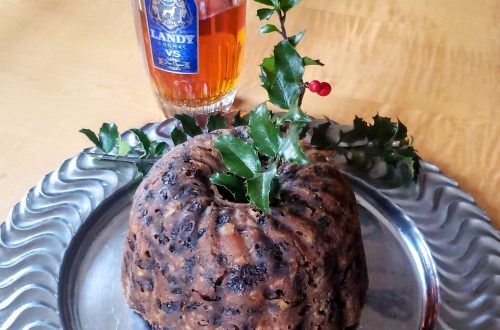
Feasting with the Poets
When it comes to a combination of food, history, and tradition, not much beats the annual Robert Burns Night, held each year on or near the Scottish poet’s birthday January 25. What I admire is that the feast is a celebration of a traditional main dish along with a writer who echoes the character of the people. Burns, considered by many the national poet of Scotland and known as “Rabbie,” was the author of Auld Lang Syne, A Man’s a Man for A’ That, To a Mouse, and Tam o’ Shanter. As for Rabbie Burns Night, as many of these gatherings are called, it’s pure Scotland, whether held there or in Canada, Australia, the U.S., or wherever admirers are inspired.
Catherine Brown, a native Scot and former food correspondent for the Herald in Glasgow, explains that a proper feast begins with the piping in (as in bagpipes) of the guests. The piper enters the room, followed by the chef carrying the 20-pound chieftain haggis, followed by a waiter with a bottle of whisky. After walking sunwise round the company, they stop before the event’s chairman, who receives the whisky from the waiter and pours two glasses, one for the chef and one for the piper, while the haggis is placed on a table.
At this point, a guest recites Burns’ 1786 poem Address to A Haggis while plunging a dirk into the large meat pudding, cutting a St. Andrews Cross on top, pulling back the flaps, and inserting a serving spoon. That’s followed by the Selkirk Grace: “Some hae meat an canna eat/And some wad eat that want it/But we hae meat, and we can eat, and sae the Lord be thankit.”
And the meal commences: a first course of soup – often Scotch broth, cullen skink, or cock-a-leekie – followed by the haggis. Typical accompaniments are a dish of neeps and tatties (mashed turnips and potatoes). There’s a dessert course, then the toasts, a speech remembering Burns, and two short readings: An Address to the Lassies (in former times, the women who prepared the meal) countered by a Reply from the Lassies by a female guest. The feast closes with the assembly standing, joining hands, and singing Auld Lang Syne.
Brown writes that haggis was not really a particularly Scottish dish until Burns wrote his address to it. The celebratory tone, she says, struck a dear note in Scottish hearts. As for the haggis, “Do not judge by appearances. Honour the hones virtues of sense and worth, not in French ragouts and fricases, but in a more democratic dish which makes the least attractive parts of an animal into something worth celebrating,” he wrote.
In my mind, it would be fantastic at this point in our American history if we could find such a rallying point honoring an author. To my knowledge, we don’t have such a crowd-drawing celebratory event. In Massachusetts, the New Bedford Whaling Museum holds an annual two-day Moby Dick marathon reading each January, and the Emily Dickinson Museum in Amherst hosts a poetry festival in September. And last year, the Robert Frost Stone House Museum in Shaftsbury, Vermont honored the 100th anniversary of Frost’s Stopping by Woods.
Pardon me, but where’s the fun here? At the least, fish chowder or fried clams along with lots of rum punch with Moby Dick – and tea sandwiches and sherry with Dickinson’s Hope Is the Thing with Feathers. As for Frost, how about Yankee pot roast with plenty of beer? But I think we need something broader and more inclusive. How about a big fish boil or Cajun festival honoring Henry Wadsworth Longfellow, with readings of “The Song of Hiawatha,” “Paul Revere’s Ride,” “Evangeline – A Tale of Acadia,” and “The Wreck of the Hesperus”? What kind of dinner could you conjure that would draw people together?
To comment, please click on “Read in Browser” or on the headline to view the blog on the website. You can log in and comment at the end of the blog to share your thoughts and start a discussion.
If you’d like to share the blog, click on the Facebook icon or one of the others. Thanks!





6 Comments
Chuck Kennedy
Great article!. How about Hemingway and a cuban dish, along with 38 martinis that he ordered at Le Crillon restaurant to celebrate De Gaulle’s retaking of Paris?
Farmboy
That’s heavy praise from a literate world traveler. I’d favor the Hemingway Daiquiri — rum, grapefruit juice and Luxardo liqueur. And there’s also the French 75 or the Death in the Afternoon. The celebration could include a procession of folks in matador dress and a couple twirls of the matador cape. Thanks.
Carol Birkland6
From my experience you need more than a little Scotch to get through the haggis.
Farmboy
When in Edinburgh, I’ve had haggis with a full Scotch breakfast. And I’ve even eaten haggis nachos. Beer helps. But not for breakfast.
Catherine
Truman Capote claimed to have been born in the Hotel Monteleone in New Orleans. The famous Carousal Bar and the hotel are mentioned in books by Tennessee Williams, Steven Ambrose, Eudora Welty and Ernest Hemingway. A real good reason to get your NOLA cuisine on. With readings. Maybe sidecars for cocktails?
Farmboy
Now that’s a great idea!